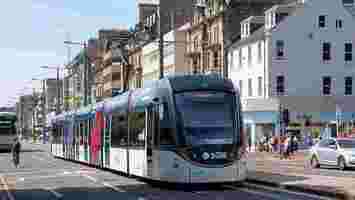Why you shouldn’t trust Tesla’s latest Full Self Driving beta update
Elon Musk had initially promised the fabled Full Self-Driving Beta version 9 back in August 2018 . And then again in 2019 . Well, if you’re a Tesla fan, you already know that none of these commitments were fulfilled.

So when, earlier this month, Musk swore on Twitter that the “FSD Beta 9 is shipping soon,” it came as a surprise that he actually held true to his word.
On Saturday, the company released the software update to some 2,000 users in its “Early Access Program.”
While Musk usually presents updates and new releases in a rather overconfident way, this time you can notice on his post an emphasis on potential limitations and oversights.
Interestingly, this is even more amplified in the software release notes:
Well, look at that! Tesla is finally warning about complacency, while admitting that its system may fail and “do the wrong thing at the worst time.” That’s definitely a step in the right direction, as much as it is a necessary move for the company’s safety reputation.
Since the Autopilot release in 2015, there have been at least 11 deaths in nine crashes in the US, where the driver assistance system was engaged. There have also been too many Autopilot abuse instances to name. At the same time, the National Highway Traffic Safety Administration (NHTSA) now obliges car makers to report autonomous vehicle crashes within 24 hours .
So again, a necessary move.
According to release notes, which you can see above, the update claims to improve the FSD visualization that “will expand to show additional surrounding information.”
What’s more, the cabin camera above the rearview mirror “can now determine driver inattentiveness” featuring audible alerts that remind the driver to keep their eyes on the road, when Autopilot is engaged.
Yeah, it seems that the new Beta is all about enhanced safety, but then again Tesla is more willing than its competitors to test its software updates on its customers…
In any case, here are some videos, where you can get an idea of what the upgraded software looks like:
Do EVs excite your electrons? Do ebikes get your wheels spinning? Do self-driving cars get you all charged up?
Then you need the weekly SHIFT newsletter in your life. Click here to sign up .
Edinburgh plans to make its public transit net-zero by 2030 — here’s how
This article was originally published by Christopher Carey on Cities Today , the leading news platform on urban mobility and innovation, reaching an international audience of city leaders. For the latest updates follow Cities Today on Twitter , Facebook , LinkedIn , Instagram , and YouTube , or sign up for Cities Today News.

Edinburgh City Council has published a ten-year plan aimed at delivering a more integrated and sustainable net-zero transport system.
The City Mobility Plan – which is subject to approval at the Transport & Environment Committee on 19 February – will replace Edinburgh’s Local Transport Strategy . It sets out a strategic approach to the sustainable movement of people and goods around the city over the next decade.
Measures include a commitment to encourage a change in public behavior towards the use of sustainable transport, the expansion of the tram and mass rapid transit network, improvements to bus routes, creating ‘mobility hubs’ in existing communities and new developments, and the introduction of a city operations center to monitor traffic.
Future development
The plan is aligned with the forthcoming City Plan 2030 , the council’s second Local Development Plan, which aims to transform the city’s overall development and manage Edinburgh’s growth.
The city carried out a public engagement campaign in 2018 to gather ideas on new policy measures and has incorporated this feedback on how to improve public transport provision, cycling, walking, and electric vehicle infrastructure, and reduce the volume of polluting traffic in the city.
Edinburgh Council Leader, Adam McVey, said: “We’re already making great strides towards reducing carbon emissions in Edinburgh but, if we are to achieve our 2030 target, now is the time to be even bolder and more ambitious. The City Mobility Plan offers a radical, 10-year plan to transform transport in the Capital, achieving the kind of change we need by expanding the use of bus, tram, rail, walking, and cycling to provide the best quality of life for everyone.
“What’s crucial to any strategy, however, is the buy-in of our residents and those who travel into the Capital to work and visit. Everyone needs to play their part and I look forward to engaging with the public as we progress a finalized City Mobility Plan, alongside the development of the City Plan 2030.”
MaaS
Last month Scotland’s national transport authority announced it was making £1 million (US$1.38 million) available for companies looking to expand their Mobility as a Service (MaaS) solutions across the country.
The program was established to support the Scottish Government’s green goals by enticing people away from private car ownership to reduce carbon emissions.
A key concept of MaaS is providing people with accessible, digital access to travel information, so they can be better informed on the different ways to undertake their journey.
This includes solutions to gather personalized travel requirements into a single travel app or a service that allows unlimited access to multiple transport providers via a monthly user fee.
Finnish firm Maas Global launched a MaaS service in the West Midlands in 2018 through its Whim app, providing integrated access to train, tram, bus, taxi, cycle hire, car hire, and parking services across the urban region.
SHIFT is brought to you by Polestar. It’s time to accelerate the shift to sustainable mobility. That is why Polestar combines electric driving with cutting-edge design and thrilling performance. Find out how .
Gates and Bezos invest in EV mineral mining in Greenland
Critical minerals needed for electric vehicles are in high demand and world renowned billionaires are now funding an exploration project in Greenland.

Mineral exploration company KoBold Metals, backed by Bill Gates, Jeff Bezos, Michael Bloomberg, and Ray Dalio, has signed a joint venture with British mining firm BlueJay in search for nickel, copper, cobalt, and platinum.
As per BlueJay’s statement, Kobold will invest $15 million in the Disko-Nuussuaq project on Greenland’s west coast in exchange for a 51% stake in the project.
Disko-Nuussuaq covers a 2,776 km² magmatic massive sulphide area, expected to be rich in nickel, copper, platinum, and cobalt.
In fact, based on BlueJay’s studies, it has the potential to host mineralization similar to the world’s largest nickel/copper sulphide mine, Norilsk-Talnakh in Siberia, Russia.
Kobold’s funding will be implemented in a two-stage earn-in commitment:
Stage 1: By December 31, 2022, $3.4 million will be given for a dvanced geological and geophysical evaluation of Disko – Nuussuaq to refine drill-targets using KoBold’s proprietary technology.
Stage 2: By December 31, 2024, $11.6 million will be given to either drilling expenditure or 15 pre-agreed drill holes within the Disko license area.
BlueJay will maintain its 49% shareholding by funding its pro-rata commitment after Stage II.
“This agreement is transformative for Bluejay,” said the comany’s CEO Bo Steensgaard. “We are delighted to have a partner at the pinnacle of technical innovation for new exploration methods, backed by some of the most successful investors in the world.”
Indeed, BlueJay, which is worth $91 million, is a relatively small player compared to other companies with licenses in Greenland, such as Anglo American.
Since the announcement , however, the company’s stock has traded 26% higher.
HT – Reuters , This is Money